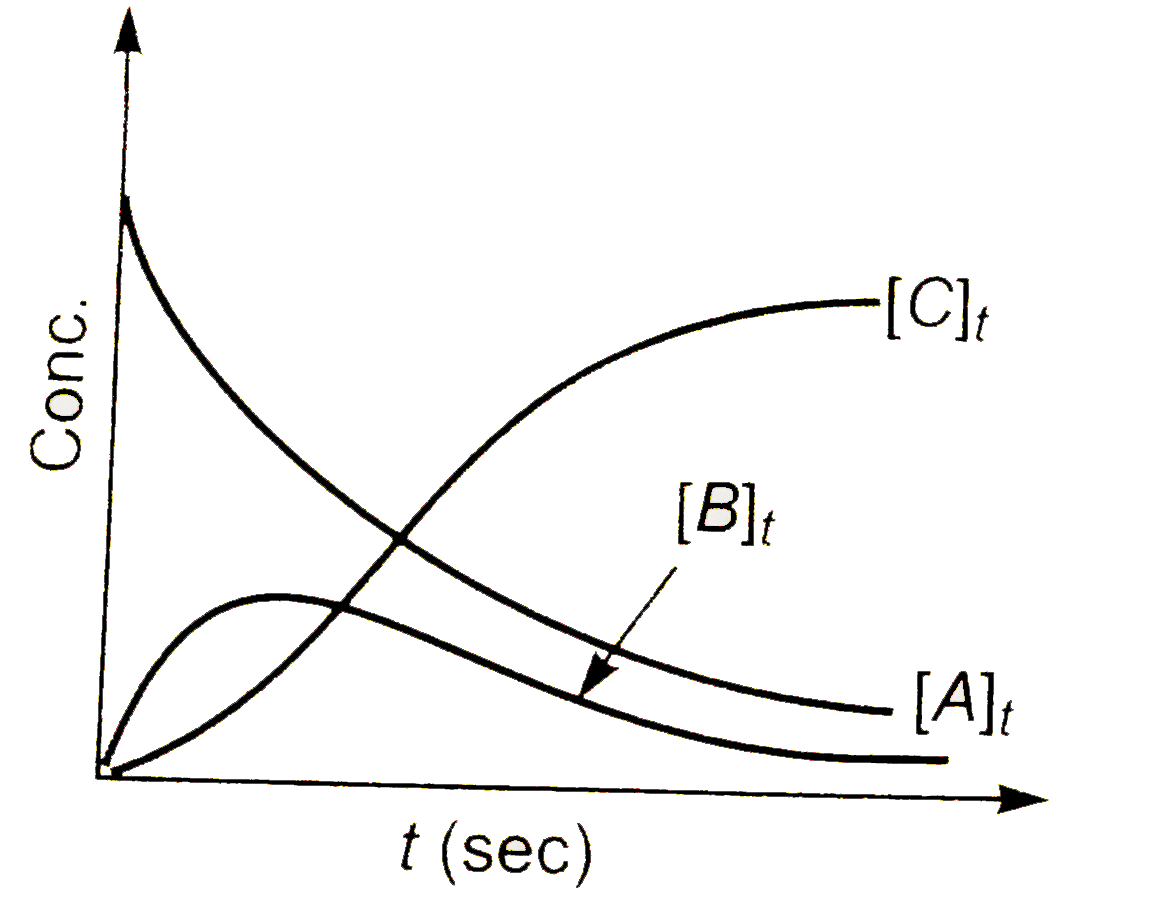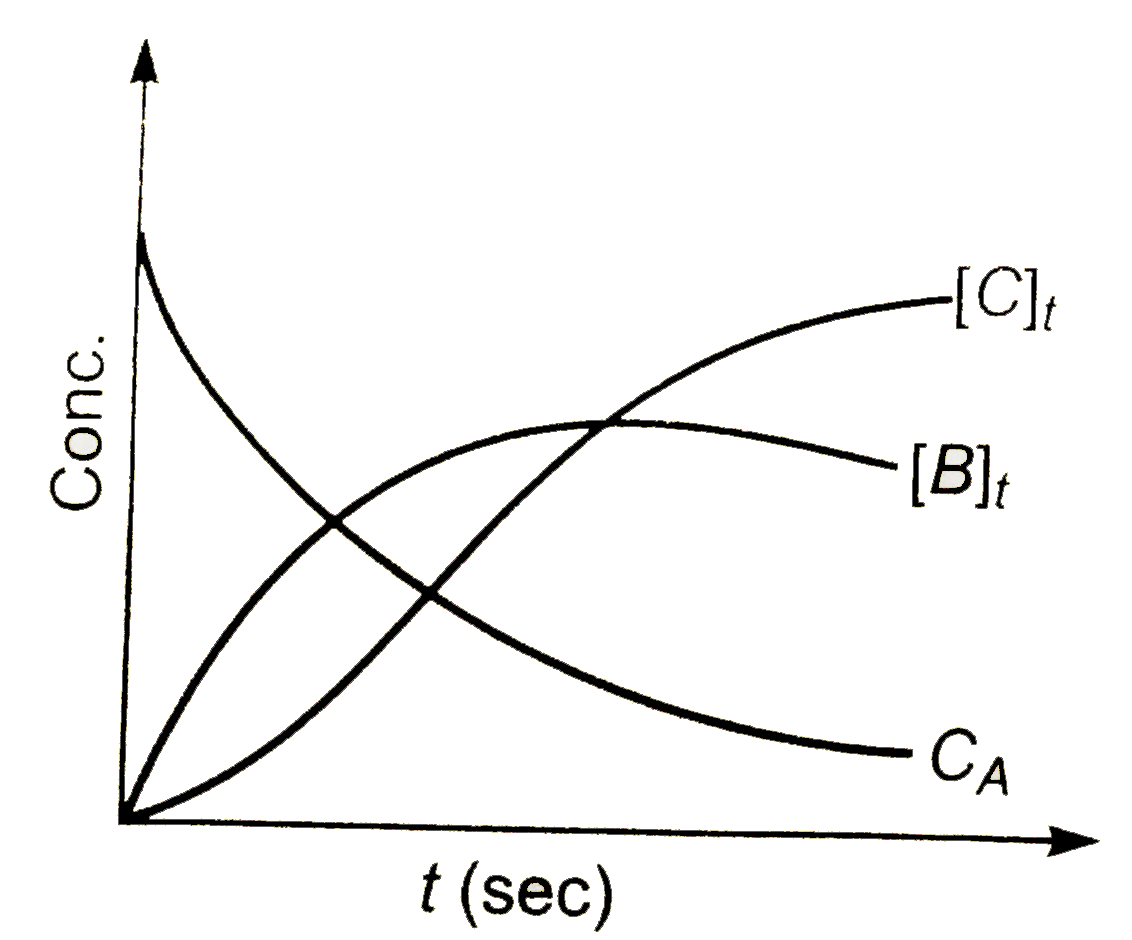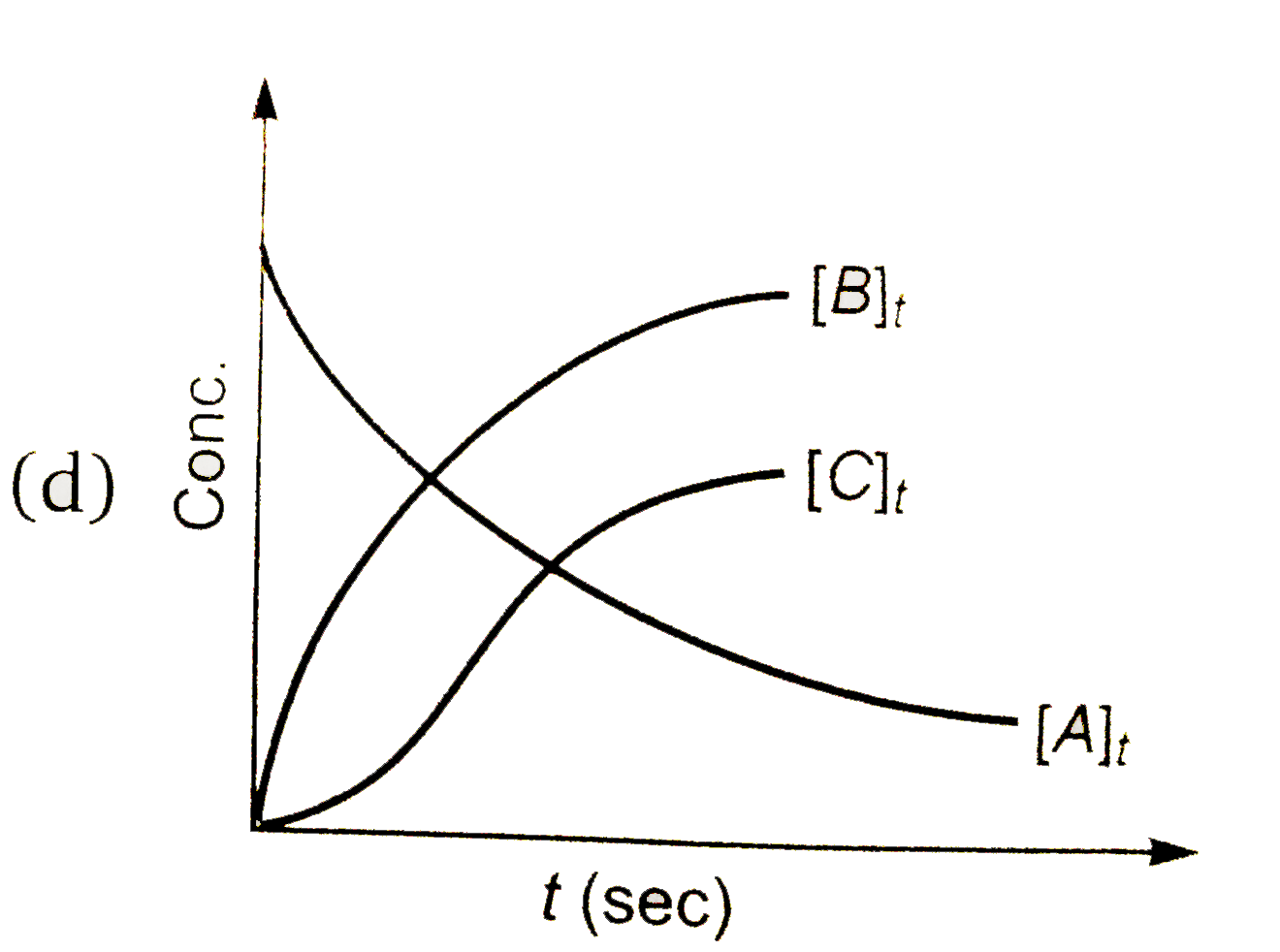A reaction takes place in various steps. The rate constatn for first, second, third and fifth steps are k1,k2,k3 and k5 respectively The overall rate constant is given by
k=k2k3(k1k5)1/2
If activation energy are 40, 60, 50, and 10 kJ/mol respectively, the overall energy of activation (kJ/mol) is : Solution in Punjabi
10
20
25
none of these
The correct Answer is:C
Step by step video & image solution for A reaction takes place in various steps. The rate constatn for first, second, third and fifth steps are k_(1),k_(2),k_(3) and k_(5) respectively The overall rate constant is given by k=(k_(2))/(k_(3))(k_(1)/(k_(5)))^(1//2) If activation energy are 40, 60, 50, and 10 kJ/mol respectively, the overall energy of activation (kJ/mol) is : by Chemistry experts to help you in doubts & scoring excellent marks in Class 12 exams.
Topper's Solved these Questions
- BOOK - NARENDRA AWASTHICHAPTER - CHEMICAL KINETIC & NUCLEAR CHEMISTRYEXERCISE - Level 2 (Q.33 To Q.35)2videos
CHEMICAL KINETIC & NUCLEAR CHEMISTRY
- BOOK - NARENDRA AWASTHICHAPTER - CHEMICAL KINETIC & NUCLEAR CHEMISTRYEXERCISE - Level 3 - Passage1videos
CHEMICAL KINETIC & NUCLEAR CHEMISTRY
- BOOK - NARENDRA AWASTHICHAPTER - CHEMICAL KINETIC & NUCLEAR CHEMISTRYEXERCISE - Level 21videos
CHEMICAL KINETIC & NUCLEAR CHEMISTRY
- BOOK - NARENDRA AWASTHICHAPTER - SURFACE CHEMISTRYEXERCISE - Level -21videos
SURFACE CHEMISTRY
Similar Questions
In a sample of wood, the reading of a counter is 32 dpm and in a fresh sample of tree it is 122dpm . Due to error counter gives the reading 2 dpm in absence of .14C . Half life of .14C is 5770 years .
The approximate age (in years) of wood sample is :04:31View SolutionTwo consecutive irreversible first order reactions can be represented by
Ak1−−→Bk2−−→C
The rate equation for A is readily interated to obtain
[A]t=[A]0.e−k1t , and [B]t=k1[A]0k2−k1[e−k1(t)−e−k2(t)]
When k1=1s−1 and k2=500s−1 , select most appropriate graph
a) b)
b) 
c) d)
d)  03:57View Solution
03:57View SolutionThe forward rate constant for the elementary reversible gaseous reaction
C2H6<⇒2CH3is1.57×10−3s−1at100K
What is the rate constant for the backward reaction at this temperature if 10−4 moles of CH3 and 10 moles of C2H6 are present in a 10 litre vessel at equilibrium .
a) 1.57×109Lmole−1s−1
b) 1.57×1010Lmole−1s−1
c) 1.57×1011Lmole−1s−1
d) 1.57×107Lmole−1s−103:06View Solutionfor the graph below, select correct order of temperture ?
 View Solution
View SolutionA reaction takes place in theee steps: the rate constant are k1,k2,andk3. The overall rate constant k=k1k3/k2. If the energies of activation are 40,30,and20KJmol−1, the overall energy of activation is (assuming A to be constant for all)
01:28View SolutionA reaction takes place in theee steps: the rate constant are k_(1), k_(2), and k_(3) . The overall rate constant k=(k_(1)k_(3))/(k_(2)) . If E_(1), E_(2) , and E_(3) (energy of activation) are 60, 30 and 10kJ , respectively, the overall energy of activation is
02:27View SolutionA reaction takes place in three rate determining steps having rate constants K_(1), K_(2), K_(3) respectively. The overall rate constant K=(K_(1)K_(3))/K_(2) . If energy of activations for the three steps are respectively 10, 20, 40 kJ . The overall energy of activation is:
02:41View SolutionA reaction takes place in various steps. The rate constatn for first, second, third and fifth steps are k_(1),k_(2),k_(3) and k_(5) respectively The overall rate constant is given by k=(k_(2))/(k_(3))(k_(1)/(k_(5)))^(1//2) If activation energy are 40, 60, 50, and 10 kJ/mol respectively, the overall energy of activation (kJ/mol) is :
02:27View SolutionA reaction takes place in three steps. The rate constant are k1,k2 and k3. The overall rate constant k=k1k3k2. If E1,E2 and E3 (energy of activation) are 60, 30 and 10 kJ, respectively, the overall energy. Of activation is
02:27View SolutionFor a reaction taking place in three steps, the rate consatnt are k1,k2andk3. The oveall constant k=k1k2k3 . If the energy of activation values of for the first, second and third stage are 40,50 and 60 kJ mol−1 is :
View SolutionA reaction takes place in three steps with individual rate constant and activation energy,
Rate constantActivation energyStep 1k1Ea1=180kJ/molStep2k2Ea2=180kJ/molStep3k3Ea3=180kJ/mol
oveall rate constant, k=(k1k2k3)2/3 overall activation energy of the reaction will be :View SolutionFor a reaction taking place in three steps, the rate consatnt are k1,k2andk3. The oveall constant k=k1k2k3 . If the energy of activation values of for the first, second and third stage are 40,50 and 60 kJ mol−1 is :
04:44View SolutionFor a reaction taking place in three steps, the rate consatnt are k1,k2andk3. The oveall constant k=k1k2k3 . If the energy of activation values of for the first, second and third stage are 40,50 and 60 kJ mol−1 is :
03:53View SolutionA reacation takes place in three steps with actiation energy Ea1=180 KJ/mol , Ea2 =80 KJ/mol , Ea3=50 KJ/mol respectively overall rate constant of the reaction is k=[k1k2k3]2/3 the overall activation energy of reaction will be (Here k1,k2aandk3 are rate constant of first, second and third step respectively.):
02:53View SolutionA reaction takes place in 3 steps, the rate constant are K_(1),K_(2),K_(3) and energies of activation are 40, 30 and 20 Kj reaspectively. If overall rate constant K=(K_(1),K_(3))/(K_(2) , the overall energy of activation is:
02:37View SolutionA reaction takes place in various steps. The rate constant for first, second, third and fifth steps are k1, k2, k3 and k5 respectively. The overall rate constant is is given by:
k=k2k1(k1k2)12 activation energy are 40,60, 50 and 10 kJ/mol respectively, find the overall energy of activation (kJ/mol).02:53View Solution

